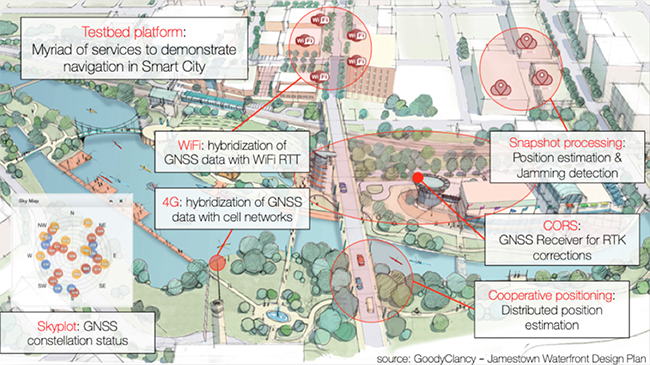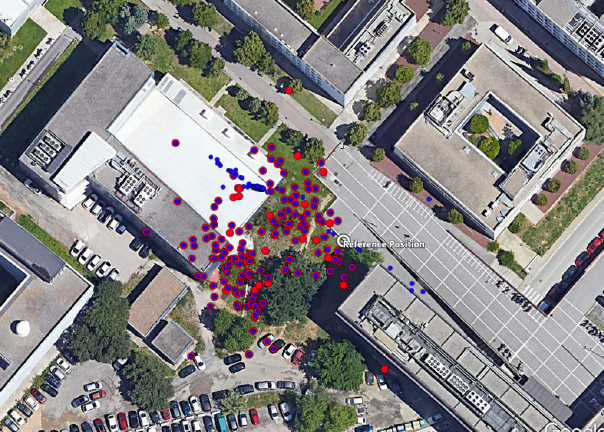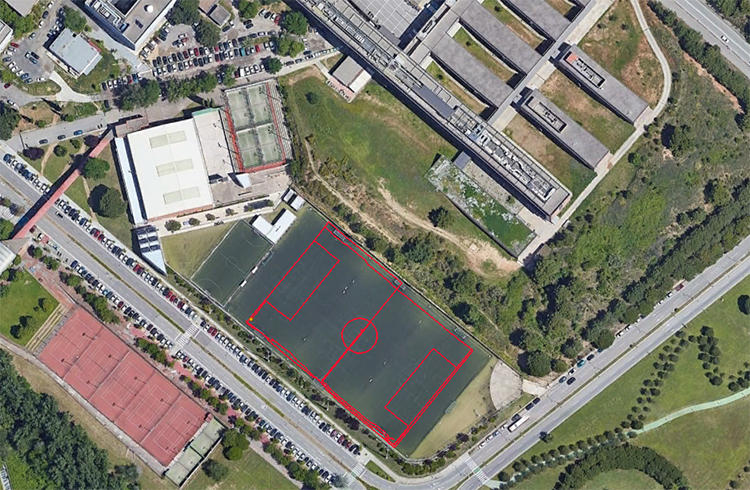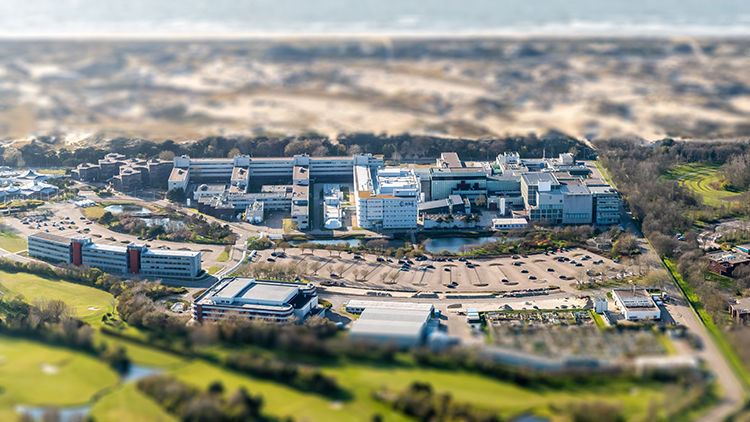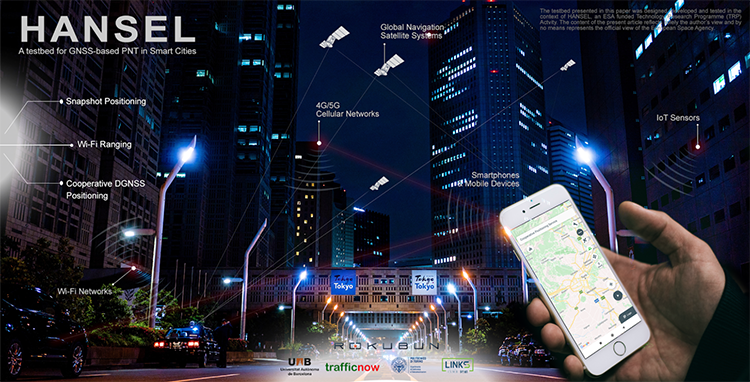ESA testing sensor network for smart city navigation
New infrastructure added to ESA’s ESTEC technical centre in the Netherlands is helping to test how tomorrow’s smart cities will operate in practice.
The HANSEL system is hosted in ESTEC’s Navigation Laboratory and allows linking to sensors across the site, providing insight into the collective networking and computing needed to get a variety of ‘intelligent elements’ to mesh seamlessly together – what the brain of a future smart city might look like.
Scenes from future smart city living: building light and power switching on and off as occupants move from room to room; a smart factory zone operating without human intervention; autonomous cars that pull up to the kerb just as you need a ride; urban drones that deliver orders right into your hands. Central to these concepts is the need for shared, precise positioning.
The challenge is that satellite navigation – today’s leading positioning method – is simply not precise or reliable enough in these scenarios to realise such visions, at least by itself.
“Global Navigation Satellite Systems alone cannot provide this kind of seamless navigation solution, especially not in cities,” explains Miquel Garcia-Fernandez, Chief Technology Officer and co-founder of Spanish company Rokubun, which led the project for ESA.
“Cities have ‘urban canyons’ where high buildings block satellite visibility in the sky, while signal reflections off artificial surfaces – known as ‘multipath’ – degrade the positioning performance. support is needed to give an extra bit of reliability and resilience, and that is where additional positioning solutions such as wi-fi and 5G come in, and this is what we have been exploring with HANSEL.”
The traditional method of harnessing wi-fi for positioning purposes has been simply to create maps of wi-fi signal strength across given geographic areas, which results in limited accuracy. A new wi-fi standard additionally allows your device to constantly ‘ping’ the wi-fi access points to determine the signal's round trip travel time and therefore the distance between itself and the access point, offering an additional solution to fix position.
In the fairy tale of Hansel and Gretel the two children use pebbles to find their way back out of the forest (then later trying out breadcrumbs, which did not work so well). The HANSEL system looks forward to a time when smart cities are embedded with sensors that measure their positions and share them with each other, allowing the various smart city components to interact and contribute to overall accuracy and availability improvements.
Miquel Garcia-Fernandez adds: “Our vision is of a decentralised network of relatively low-cost receivers that work together to sharpen overall positioning performance. So for instance if we have two receivers on the move – like smartphones for instance – and one’s position is not so well known, then the pair can calculate their relative distance from each other, so that one ends up improving the performance of the other.
“Or the system might carry out ‘snapshot processing’, which is where each single small receiver of very limited capacity collects a snapshot of GNSS signals, but the actual signal processing and position fix is carried out by a central processing facility. This facility would do all the heavy lifting computing that is needed. Such an approach is also useful when it comes to tackling the growing problem of GNSS jamming. It could collect individual sensor inputs and identify jamming of adjacent sensors in a local area, then issue an environment warning.
“In an actual smart city you might imagine a collaborative positioning approach where everything is decentralised, on a peer to peer communication model that resembles blockchain, but to see how that might work in practice we have a central processing facility in our testbed, giving an overview of sensor interaction.”
Radio navigation engineer Rui Sarnadas oversaw the project for ESA: “After initial testing from all consortium members, and further integrated tests as part of the Universitat Autònoma de Barcelona ‘Smart Campus Living Lab’, the prototype HANSEL system has since been installed in ESA’s Navigation Laboratory, based at our ESTEC technical centre in the Netherlands.
“The infrastructure can now combine a number of wi-fi hotspots across the establishment, and the GNSS receivers installed on the lab, and can further add users and sensors, both fixed and moving through the complex, to collect and exchange data such as smartphone measurements or cellular radio samples. So that’s quite a lot of data to work with. We’ve been using HANSEL to look into topics such as augmented ‘GNSS +’, Wi-Fi and GNSS+, cellular ‘hybridisation’ and seamless indoor-outdoor positioning, collaborative positioning, as well as snapshot processing.
“Effectively HANSEL has become a new element of ESTEC’s infrastructure, that all kinds of projects are free to make use of.”
The development of HANSEL was supported through ESA’s Technology Development Element, supporting promising new ideas in space technology. Rokubun was joined on the project by UAB, the trafficnow company in Spain, Politecnico di Torino university and the Italian LINKS Foundation.


